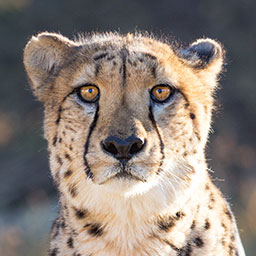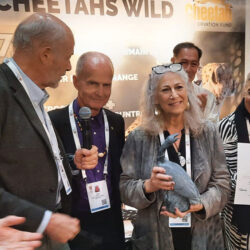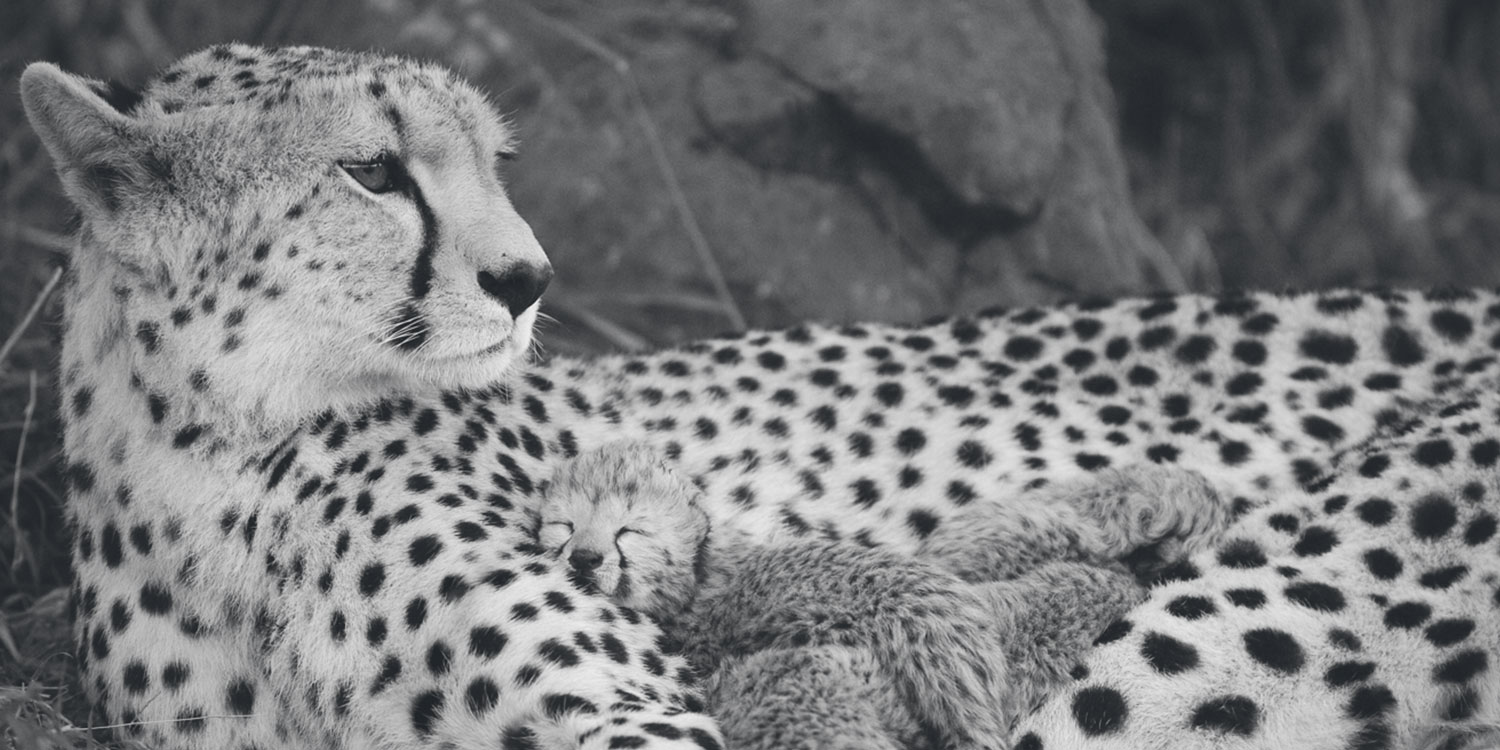Founder and Executive Director of the Cheetah Conservation Fund Comments on Stay of Cheetah Re-Introduction by India Supreme Court
-

- by CCF Staff May 16, 2012
For Immediate Release: May 16, 2012
Contact:
Dr. Laurie Marker – 264 81124 7887 (Namibia)
Dr. Bruce Brewer – 264 811247799 (Namibia)
Patricia Tricorache – 1-305-766-8229 (USA)
FOUNDER AND EXECUTIVE DIRECTOR OF THE CHEETAH CONSERVATION FUND COMMENTS ON STAY OF CHEETAH RE-INTRODUCTION BY INDIA SUPREME COURT
Dr. Laurie Marker, Founder and Executive Director of the Cheetah Conservation Fund, issued the following statement regarding the Indian Supreme Court’s staying the cheetah re-introduction project in India: “CCF is not a part of any of the negotiations or decisions being made on the Indian side and therefore we can only continue to provide advice and support, as we have thus far.”
The plan by the Indian government, and headed by Dr. M.K. Ranjitsinh, who served as Indian Government’s first Director of Wildlife and is now Chairman of the Wild Trust of India (WTI), would reintroduce cheetahs in stages over the next decade. To this effect, a team of experts including representatives from the Cheetah Conservation Fund (CCF), Cheetah OutReach, the IUCN’s Cat Specialist Group, Re-introduction Specialist Group and Veterinary Specialist Group, and Oxford University’s WILDCRU, met in 2009 with Indian authorities and forestry directors from various regions.
A report of these meetings concluded that “With the establishment of a network of protected areas, implementation of effective wildlife legislation and a dramatic change in the conservation ethos and awareness in the country inter alia, the original cause for the extinction of the cheetah in India has been adequately addressed.”
Careful consideration of the genetics of the Asiatic cheetah and its only remaining population found in Iran (less that 100) led to the conclusion that the cheetahs participating in this project should be imported from southern Africa, where the largest populations of wild cheetah still exist. Furthermore, the fact that the Asiatic and African cheetahs are genetically so similar, according to cat specialists including world renowned geneticist Dr. Stephen O’Brien, and that there are no living Indian cheetahs, there is no concern about mixing populations.
Field inspections by the Indian research team determined that the most viable release area for the first re-introduction is the Palpur-Kuno Wildlife Sanctuary, a 6,800 square kilometre (2,625 square mile) reserve in central India. The sanctuary was chosen as it is home to many species, including a variety of antelope, deer, wolves, and leopards. The absence of lions, the cheetah’s non-agressive nature, and work already done with the communities were also decisive factors. By returning cheetahs to a grasslands ecosystem where they used to thrive, the historic evolutionary balance would be restored and locally over-abundant prey species would be regulated; therefore a top-down effect of a large predator would enhance and maintain the diversity in lower trophic levels of the ecosystem, as explained in the group’s report.
In an advisory capacity, and in consultation with the re-introduction team, CCF has been working with the WTI and India’s authorities to discuss the best strategies for this re-introduction and providing its expertise based on proven successful programmes implemented in Namibia and other areas of Africa.
CCF believes that the project is sustainable to the extent that all recommendations made by the international consultants and Indian research teams are followed, and these include necessary infrastructure changes as well as community involvement and education. CCF advises that local communities be counselled in living harmoniously with wildlife, particularly predators, through training and communications programmes. To this effect, CCF emphasised the success of the conservancies in Namibia –which have become a model in conservation management where collaborative partnerships of neighbouring communities work together to develop and implement sustainable livestock and wildlife management systems. Namibian community conservation programmes have contributed enormously to integrated conservation programmes that provide benefits back to the communities involved as conservation partners, in particular, through the development of different techniques for livestock farming in a predator-friendly (non-lethal) way, and where integrated systems encourage good livestock and wildlife management. In addition, sustainable tourism has been encouraged so that jobs and business opportunities for the local people has been created.
Conservation biologists from India have attended several of CCF’s international courses in Cheetah Conservation Biology, and in Integrated Livestock, Wildlife, and Predator Management. These courses focus on capacity building and mitigating conflict between people and wildlife, with a special emphasis on the cheetah. Dr. M.K. Ranjitsinh and colleagues have visited CCF in Namibia.
With regards to the cheetahs that may be slated for re-introduction, CCF will provide its expertise with their selection as it has developed a proven protocol for re-introducing wild-caught cheetahs that allows the success of such a proposed re-introduction programme. To date, CCF has successfully re-wilded cheetah in two regions in Namibia, and has re-stocked cheetah populations in the Umfolozi National Park and Phinda, both in the KwaZulu-Natal province of South Africa. Lessons learned from these successes will assist local Indian NGOs with the re-introduction. In addition, CCF has been asked to provide experienced staff to train local rangers and WTI researchers in cheetah monitoring and behaviour.
Any cheetahs selected for the project will require permits from both the importing and exporting governments, as well as from Convention of International Trade for Endangered Species (CITES).
Editor’s notes:
The Cheetah Conservation Fund is a Namibian non-profit trust dedicated to the long-term survival of the cheetah and its ecosystems.
Since 1990, the organisation has developed education and conservation programmes based on its bio-medical cheetah research studies, published scientific research papers and has presented educational programmes to more than 350,000 outreach school learners, donated over 375 livestock guarding dogs to commercial and communal farmers as part of the CCF innovative non-lethal livestock management programme, and has established a cheetah genome resource bank of cheetah sperm, tissue and blood samples.
Research into cheetah biology and ecology has greatly increased our understanding of the fastest land animal and education programmes for schools and the farming community help change public attitudes to allow predator and humans to co-exist. However, despite the many successes of CCF programmes, the cheetah is still Africa’s most endangered big cat with ~10,000 cheetahs remaining.
In the early 1900s, there were an estimated 100,000 cheetahs in 44 countries. Current estimates of cheetah populations range from 7,500 to 12,500 in 24 African countries and a tiny population of less than 100 individuals in Iran. Namibia is home to an estimated 25% of the remaining world’s population of free-ranging cheetahs.
For more information:
Cheetah Conservation Fund
PO Box 1755, Otjiwarongo, Namibia
Tel: +264 (0) 67 306225
Fax: +264 (0) 67 306247
E-mail: [email protected]
Website: www.cheetah.org
Related Reading


